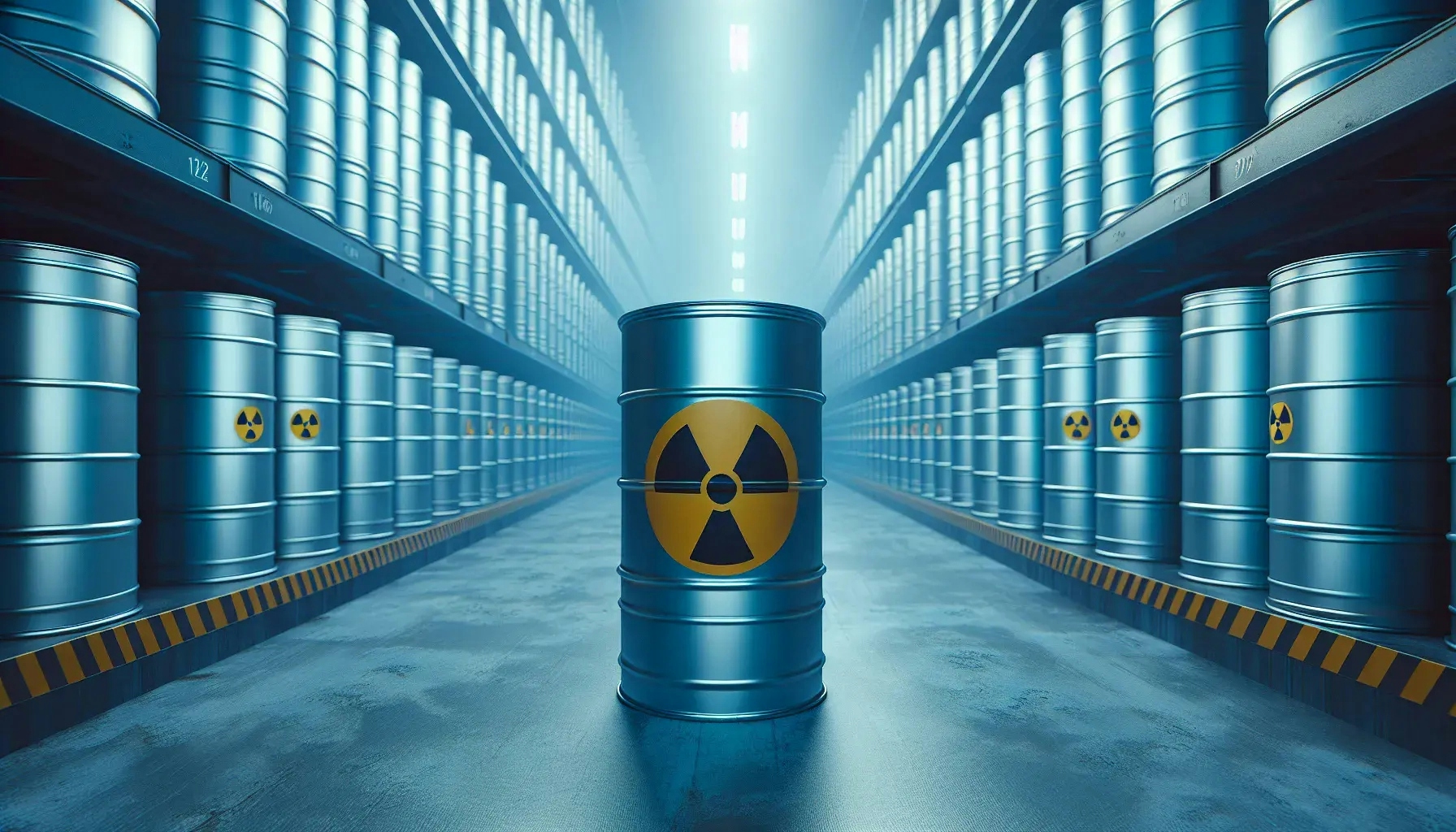Nuclear energy, a powerful source of electricity, has a significant downside: the production of nuclear waste. This waste, highly radioactive and dangerous, presents numerous challenges when it comes to storage. This blog post delves into these challenges, providing an in-depth exploration of the issues surrounding nuclear waste storage and potential solutions.
Understanding Nuclear Waste
Nuclear waste, a byproduct of nuclear fission, is a significant concern for the nuclear power industry. This waste is highly radioactive, posing a significant risk to human health and the environment. It requires careful management to ensure its safe storage and disposal.
The primary challenge in storing nuclear waste lies in its longevity. Some types of nuclear waste remain radioactive for thousands of years. This longevity necessitates the creation of storage solutions that can safely contain the waste for extended periods.
Another challenge is the volume of waste produced. Nuclear power plants generate a significant amount of waste, which increases the need for storage solutions. The storage facilities must be large enough to accommodate the volume of waste produced, yet secure enough to prevent any leaks or breaches.
The Technical Challenges
The technical challenges of storing nuclear waste are numerous. One of the most significant is the need for containment. Nuclear waste must be stored in a way that prevents it from contaminating the environment. This requires the development of storage containers that are resistant to corrosion and can withstand the intense radiation emitted by the waste.
Another technical challenge is the need for monitoring. Storage facilities must be equipped with systems that can monitor the condition of the waste and the integrity of the storage containers. These systems must be reliable and capable of operating for extended periods without failure.
The location of storage facilities also presents a technical challenge. These facilities must be located in areas that are geologically stable and away from populated areas. The selection of suitable sites for storage facilities is a complex process that involves extensive geological surveys and environmental assessments.
The Political and Social Challenges
In addition to the technical challenges, there are also political and social challenges associated with storing nuclear waste. One of the most significant is public opposition. Many people are opposed to the idea of storing nuclear waste in their communities, fearing the potential health and environmental risks.
This opposition often results in political challenges. Politicians may face pressure from their constituents to oppose the construction of storage facilities. This can result in delays or cancellations of storage projects, further complicating the issue of nuclear waste storage.
The social challenges also extend to the issue of equity. There are concerns that storage facilities are often located in disadvantaged communities, resulting in a disproportionate burden on these communities. This raises questions about the fairness of nuclear waste storage and the need for more equitable solutions.
The Economic Challenges
The economic challenges of storing nuclear waste are also significant. The construction and operation of storage facilities are expensive. These costs are often borne by taxpayers, adding to the controversy surrounding nuclear waste storage.
In addition to the direct costs, there are also indirect costs associated with nuclear waste storage. These include the potential costs of environmental cleanup in the event of a leak or breach, as well as the potential health costs associated with exposure to radiation.
The economic challenges also extend to the issue of long-term management. The longevity of nuclear waste means that storage facilities must be managed for thousands of years. This raises questions about the feasibility of such long-term management and the potential costs involved.
Potential Solutions
Despite the challenges, there are potential solutions to the issue of nuclear waste storage. One of these is the development of advanced storage technologies. These technologies aim to improve the safety and efficiency of nuclear waste storage. They include new types of storage containers, improved monitoring systems, and innovative methods for waste disposal.
Another potential solution is the use of deep geological repositories. These are storage facilities located deep underground, providing a high level of containment and isolation. Several countries, including Finland and Sweden, are already pursuing this solution.
Public engagement is also a crucial part of the solution. By involving the public in the decision-making process, it may be possible to address some of the social and political challenges associated with nuclear waste storage. This could involve public consultations, education campaigns, and efforts to ensure equity in the location of storage facilities.
The Future of Nuclear Waste Storage
The future of nuclear waste storage is uncertain. The challenges are significant, and while potential solutions exist, they are not without their own challenges. However, the need for solutions is urgent. As the use of nuclear power continues to grow, so too does the volume of waste produced.
The future will likely see continued research and development in the field of nuclear waste storage. This will include efforts to improve existing technologies and develop new ones. It will also likely involve continued public engagement and efforts to address the social, political, and economic challenges associated with nuclear waste storage.
The future of nuclear waste storage is a complex issue, but it is one that cannot be ignored. The safe and effective storage of nuclear waste is crucial for the continued use of nuclear power and the protection of human health and the environment.
Concluding Thoughts on Nuclear Waste Storage Challenges
The challenges of storing nuclear waste are significant and multifaceted, encompassing technical, political, social, and economic aspects. However, potential solutions exist, and ongoing research and development are likely to yield new and improved methods for managing this hazardous byproduct of nuclear power. The future of nuclear waste storage is a complex and uncertain one, but it is a challenge that must be met head-on for the sake of our planet and future generations.

